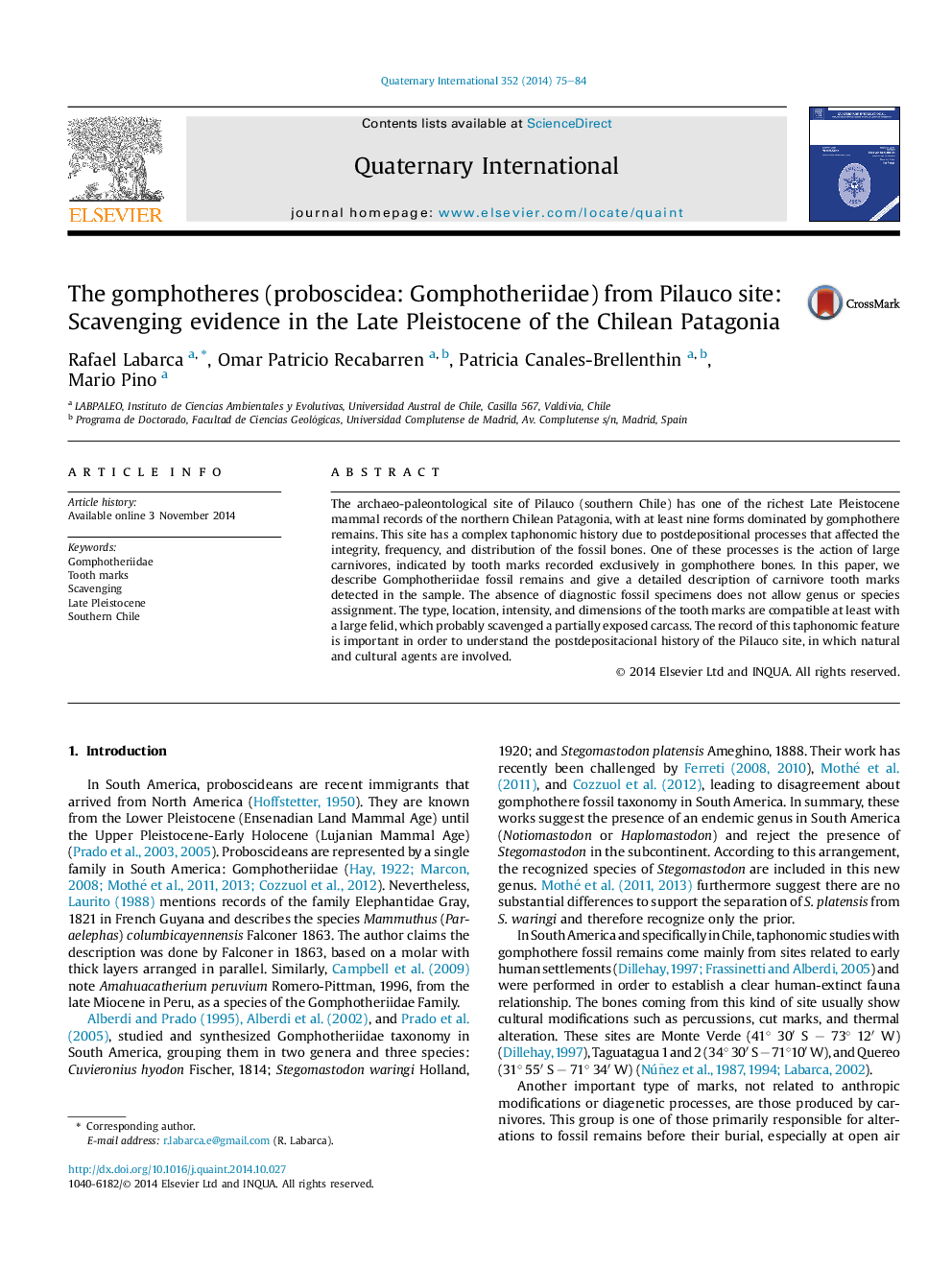| Article ID | Journal | Published Year | Pages | File Type |
|---|---|---|---|---|
| 1041308 | Quaternary International | 2014 | 10 Pages |
The archaeo-paleontological site of Pilauco (southern Chile) has one of the richest Late Pleistocene mammal records of the northern Chilean Patagonia, with at least nine forms dominated by gomphothere remains. This site has a complex taphonomic history due to postdepositional processes that affected the integrity, frequency, and distribution of the fossil bones. One of these processes is the action of large carnivores, indicated by tooth marks recorded exclusively in gomphothere bones. In this paper, we describe Gomphotheriidae fossil remains and give a detailed description of carnivore tooth marks detected in the sample. The absence of diagnostic fossil specimens does not allow genus or species assignment. The type, location, intensity, and dimensions of the tooth marks are compatible at least with a large felid, which probably scavenged a partially exposed carcass. The record of this taphonomic feature is important in order to understand the postdepositacional history of the Pilauco site, in which natural and cultural agents are involved.
